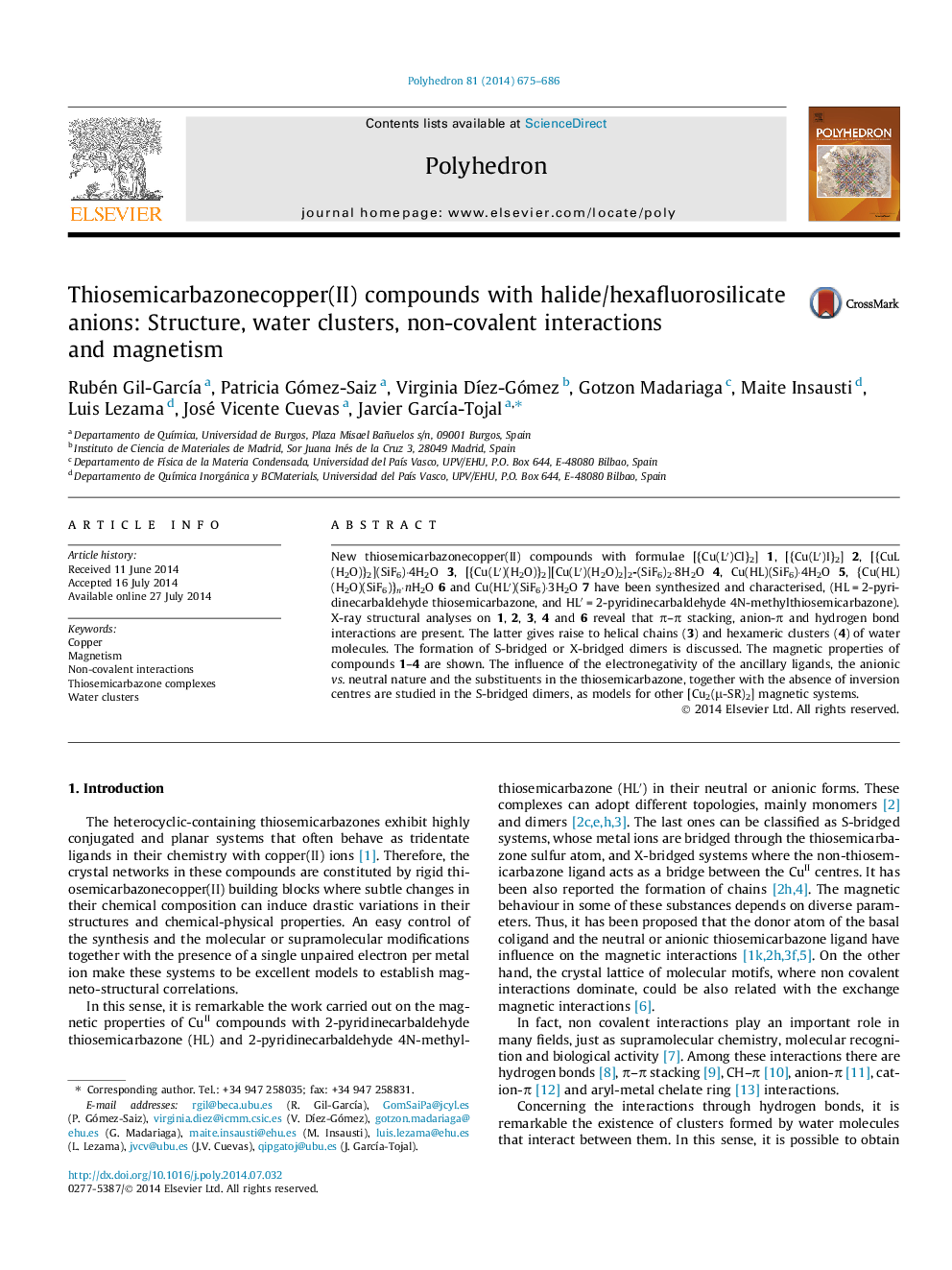| Article ID | Journal | Published Year | Pages | File Type |
|---|---|---|---|---|
| 1334481 | Polyhedron | 2014 | 12 Pages |
New thiosemicarbazonecopper(II) compounds with formulae [{Cu(L′)Cl}2] 1, [{Cu(L′)I}2] 2, [{CuL(H2O)}2](SiF6)·4H2O 3, [{Cu(L′)(H2O)}2][Cu(L′)(H2O)2]2-(SiF6)2·8H2O 4, Cu(HL)(SiF6)·4H2O 5, {Cu(HL)(H2O)(SiF6)}n·nH2O 6 and Cu(HL′)(SiF6)·3H2O 7 have been synthesized and characterised, (HL = 2-pyridinecarbaldehyde thiosemicarbazone, and HL′ = 2-pyridinecarbaldehyde 4N-methylthiosemicarbazone). X-ray structural analyses on 1, 2, 3, 4 and 6 reveal that π–π stacking, anion-π and hydrogen bond interactions are present. The latter gives raise to helical chains (3) and hexameric clusters (4) of water molecules. The formation of S-bridged or X-bridged dimers is discussed. The magnetic properties of compounds 1–4 are shown. The influence of the electronegativity of the ancillary ligands, the anionic vs. neutral nature and the substituents in the thiosemicarbazone, together with the absence of inversion centres are studied in the S-bridged dimers, as models for other [Cu2(μ-SR)2] magnetic systems.
Graphical abstractThe influence of non-covalent interactions in the structural features of new thiosemicarbazonecopper(II) compounds derived from pyridine-2-carbaldehyde thiosemicarbazone (HL) and pyridine-2-carbaldehyde 4N-methylthiosemicarbazone (HL′) is discussed. Parameters involved in their magnetic behaviours are analysed and compared with those in other [Cu2(μ-SR)2] magnetic systems.Figure optionsDownload full-size imageDownload as PowerPoint slide
